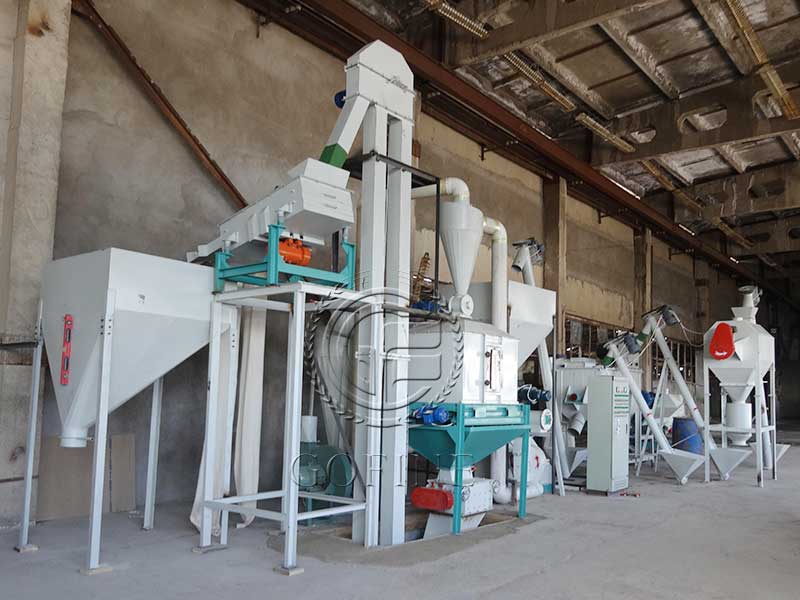1 T/H aquatic fish feed production line
1 T/H aquatic fish feed production line
A 1 ton per hour aquatic fish feed production line usually consists of multiple equipment and links. The following is the general equipment configuration and production process:
Raw material receiving and storage system:
Raw material warehouse: used to store various raw materials for fish feed, such as fish meal, soybean meal, corn meal, wheat flour, vitamins, minerals, etc. The capacity of the raw material warehouse should be determined according to production needs and the procurement cycle of raw materials. Generally, there needs to be enough space to store raw materials for several days or even weeks.
Unloading device: including conveyors, elevators and other equipment, used to unload raw materials from transport vehicles or other storage equipment into the raw material warehouse.
Crushing system:
Crusher: crush larger particles of raw materials into a particle size suitable for processing. Common crushers include hammer mills and roller mills. Hammer mills are suitable for crushing a variety of raw materials, with the advantages of high crushing efficiency and simple operation; roller mills are suitable for raw materials with higher crushing particle size requirements, and the crushed particle size is more uniform.
Screening equipment: Screen the crushed raw materials to remove oversized or undersized particles to ensure that the particle size of the raw materials meets production requirements.

Batching system:
Batching silo: used to temporarily store various crushed raw materials, each batching silo corresponds to one raw material for accurate batching.
Batching scale: accurately weigh the weight of each raw material according to the production formula. The accuracy of the batching scale directly affects the quality of the feed, and the accuracy is generally required to be within ±0.5%.
Batching controller: control the weighing operation of the batching scale according to the set formula to ensure that the proportion of various raw materials is accurate.
Mixing system:
Mixer: fully mix the various raw materials after batching. Commonly used mixers are horizontal twin-shaft paddle mixers and vertical mixers. The horizontal twin-shaft paddle mixer has good mixing effect and high efficiency, and is suitable for large-scale production; the vertical mixer has a simple structure and small footprint, and is suitable for small production lines.
Mixing time: Determine the appropriate mixing time according to the type of mixer and the characteristics of the raw materials, which is generally 3-5 minutes.

Granulation system:
Conditioner: Temper the mixed powdered feed, add steam and appropriate amount of water to soften the feed, improve the plasticity and maturity of the feed, and also kill some bacteria and microorganisms.
Granulator: Extrude the tempered feed into granules. Common granulators include ring die granulators and flat die granulators. Ring die granulators have high production efficiency and good granule quality, suitable for large-scale production; flat die granulators have simple structure and low price, suitable for small farms or experimental production.
Cooling equipment: Cool the hot pellet feed just made to reduce the temperature and moisture content of the feed and prevent the feed from mold and deterioration. Cooling equipment generally uses a countercurrent cooler with good cooling effect and low energy consumption.

Screening and packaging system:
Screening equipment: Screen the cooled pellet feed again to remove unqualified particles, such as broken particles, oversized or undersized particles, etc.
Packaging machine: Pack qualified pellet feed. The packaging specifications can be adjusted according to customer needs. Common packaging specifications are 20kg, 25kg, 50kg, etc. The packaging machine generally uses an automatic packaging machine with fast packaging speed and high precision.
The price of a 1-ton aquatic fish feed production line on the market varies depending on factors such as equipment configuration, brand, and quality, generally ranging from 30,000 to 300,000 US dollars. When choosing a production line, you need to comprehensively consider your production needs, budget, site and other factors and choose the equipment that suits you.
Prev: Excellent Animal Feed Production Line Manufacturer Next: Best Goose Feed Production Line for Feed Processing Plant




